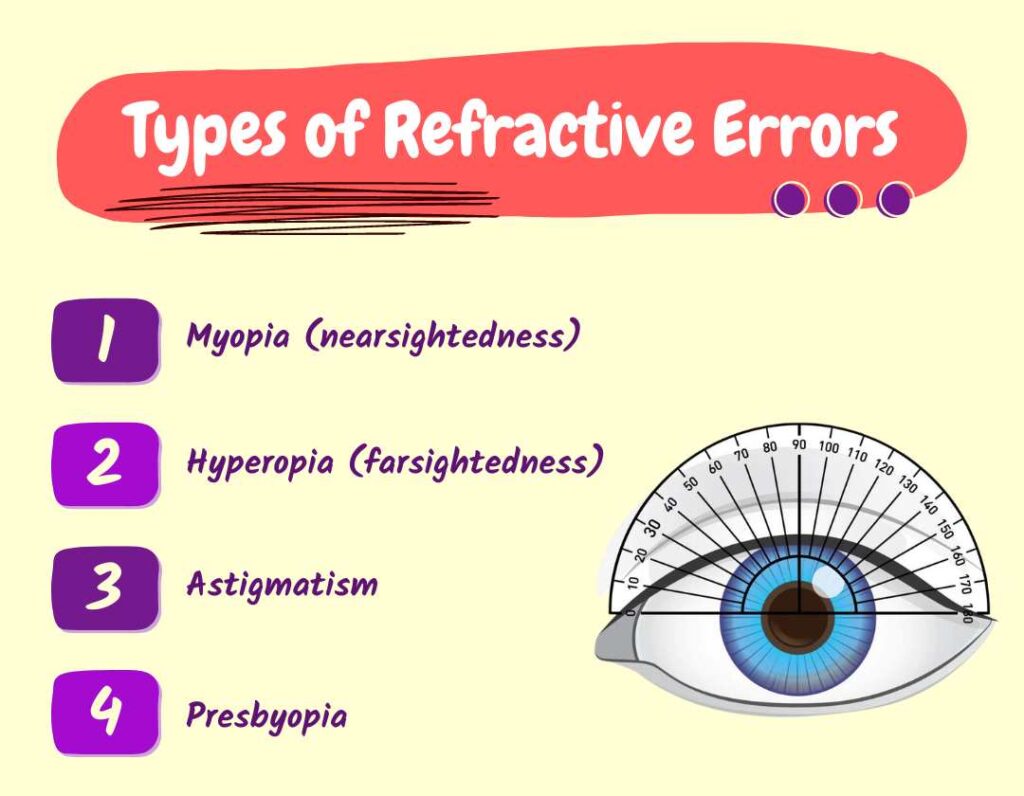
What is a Refractive Error? A refractive error happens when the eye cannot clearly focus images from the outside world. This causes blurry vision, which can affect our ability to see far, near, or both. It occurs when the shape of the eye prevents light from focusing directly on the retina (the light-sensitive layer at the back of the eye). 🧬
Types of Refractive Errors
Myopia (Nearsightedness): You can see near objects clearly, but distant ones appear blurry. Common in school-age children and young adults. Hyperopia (Farsightedness): You can see distant objects more clearly than near ones. Can cause eye strain, especially when reading. Astigmatism: Caused by an irregular shape of the cornea or lens. Vision is distorted or blurred at all distances. Presbyopia: Age-related difficulty in focusing on near objects. Starts usually after age 40.
Prevention & Eye Care Tips While some refractive errors are hereditary and not fully preventable, you can protect and preserve your vision by: 👓 1. Get Regular Eye Checks Children: Every 1–2 years Adults: At least once every 2 years More often if you wear glasses or have existing eye problems 💻 2. Follow the 20-20-20 Rule Every 20 minutes, look at something 20 feet away for 20 seconds—especially if you work with screens. 📖 3. Ensure Good Lighting When Reading or Using Screens 🧑🎓 4. Monitor Children’s Vision Watch for signs like sitting too close to the TV or squinting at the blackboard. 🥗 5. Eat Eye-Healthy Foods Include Vitamin A, C, E, and Omega-3s. Carrots, leafy greens, fish, eggs, and citrus fruits are excellent. 🕶️ 6. Use Protective Eyewear Wear sunglasses in bright sunlight to protect from UV rays. 🚭 7. Avoid Smoking Smoking increases the risk of eye diseases, including macular degeneration.
